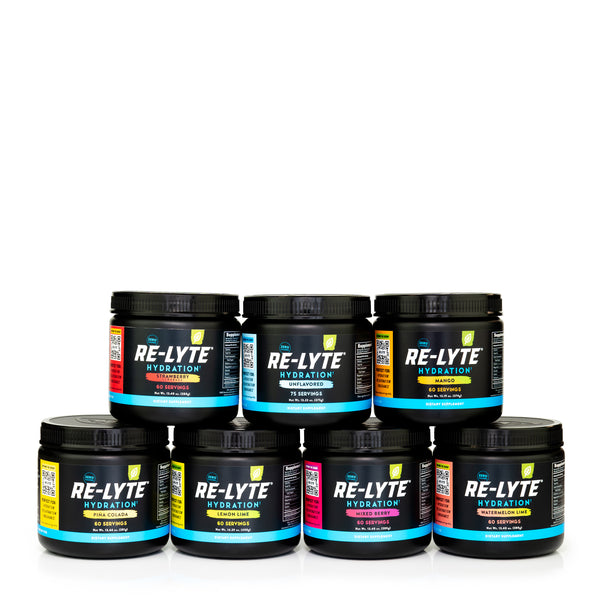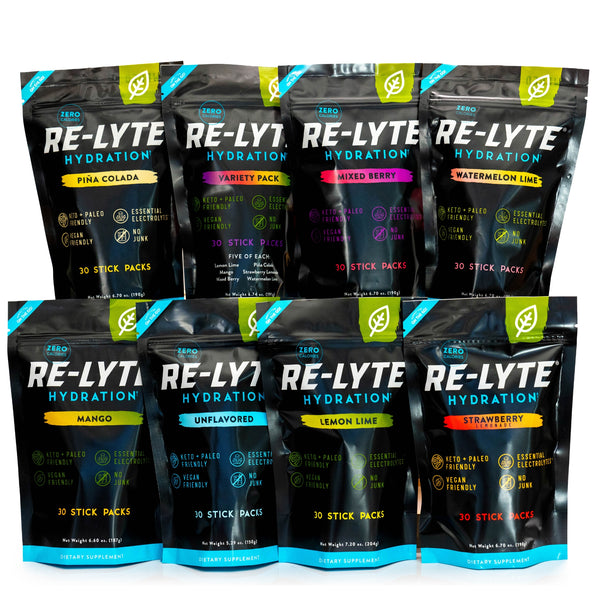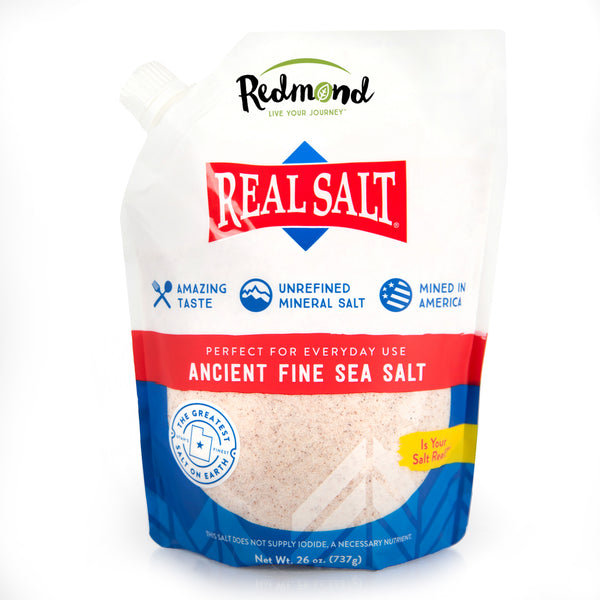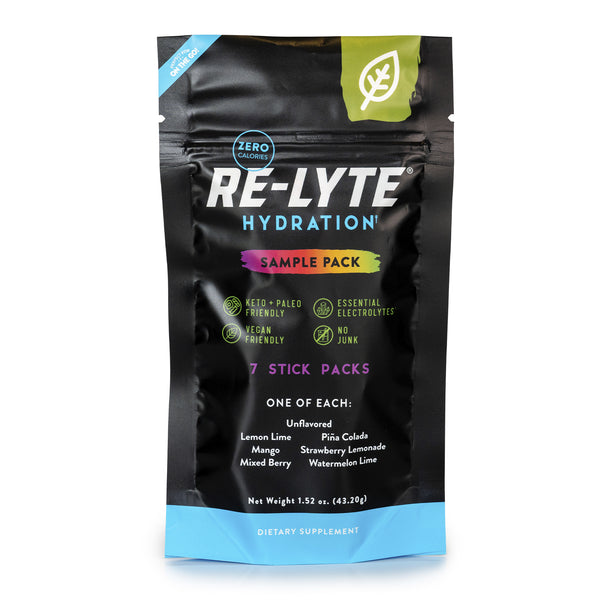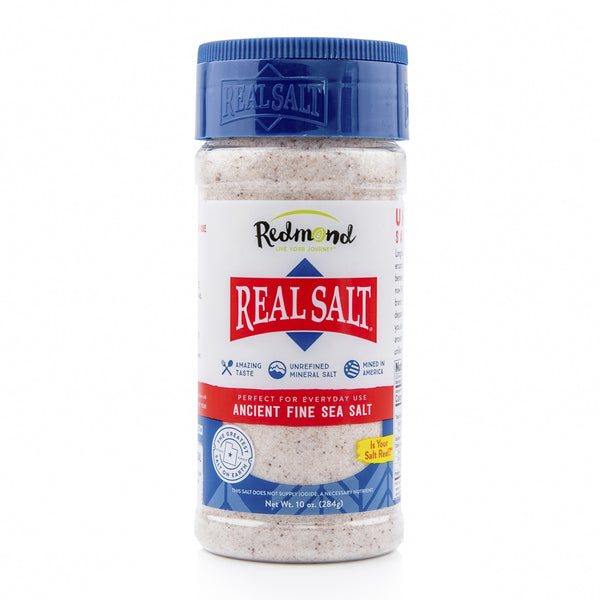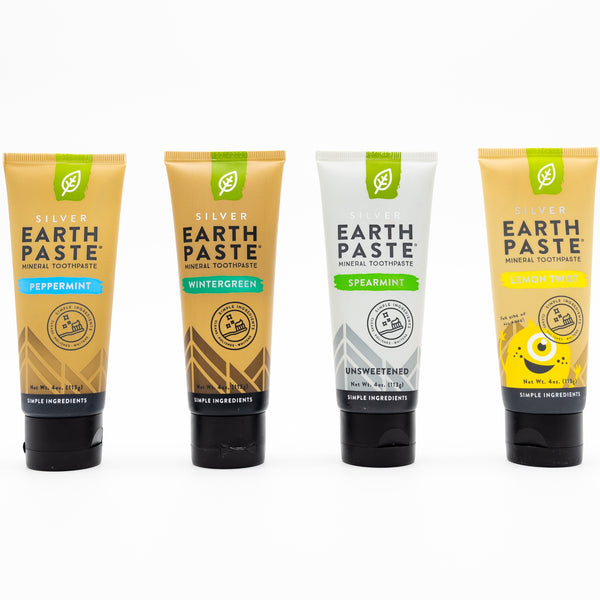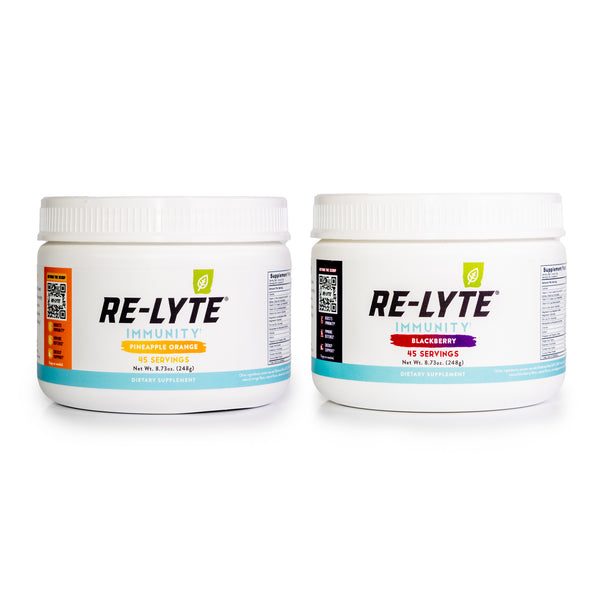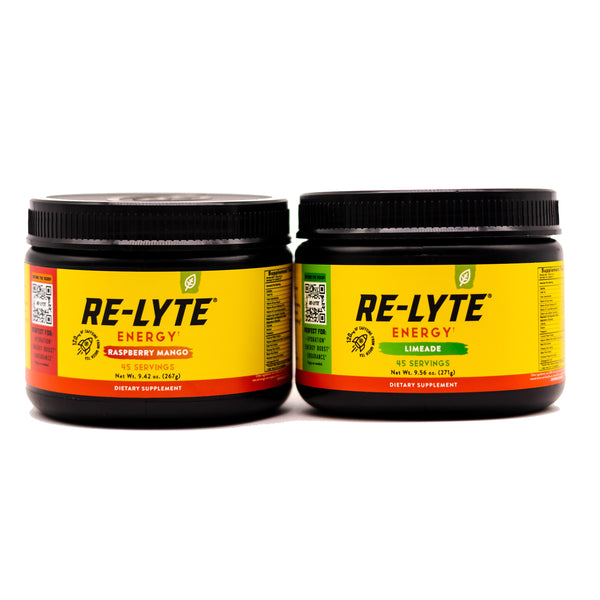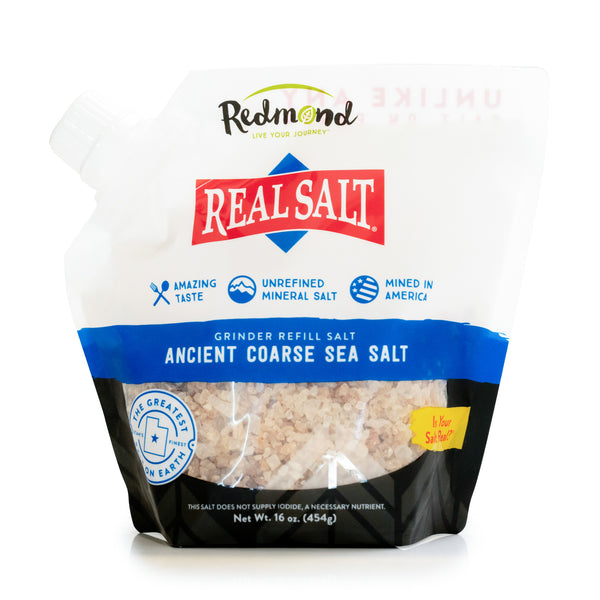Dr. James DiNicolantonio Answers Your Top Hydration Questions

When it comes to hydration advice, cardiovascular research scientist and author Dr. James DiNicolantonio is one of the experts we trust most. So, we asked him to answer your top hydration questions and give you a headstart on healthy hydration this summer.
Redmond Life: How much water do we need per day?
Dr. James DiNicolantonio: An optimal amount of water to drink per day is around 0.6 oz per pound of body weight. So, for someone who weighs 165 pounds, that’s around 2.9 liters of water per day. This will increase if someone sweats a fair amount per day. Indeed, someone who strenuously exercises in the heat may lose 1.5 to 2 liters of water through sweat per hour.
RL: How much salt do we need per day?
Dr. James: Most studies indicate that consuming between 3,000 to 5,000 mg of sodium per day is optimal for normal, healthy people. That’s around 1 ⅓ to 2 teaspoons of salt per day.
On average, people lose around 1,200 mg of sodium per hour of exercise through sweat. That’s around half a teaspoon of salt lost in sweat per hour of exercise. Thus, the more you sweat, the more salt you need.
Additionally, for every 2 cups of coffee we drink, we lose 600 mg of sodium (or ¼ teaspoon of salt). Someone who consumes 4 cups of coffee per day will lose 1,200 mg of sodium or ½ teaspoon of salt in their urine. Thus, the more coffee and caffeine someone consumes the more salt they need.
We also lose 500 mg of sodium overnight in our urine and 400 mg of sodium per 20-minute sauna session.
RL: How do you know if you’re hydrated?
Dr. James: There are several ways to track hydration status. Some are signs and symptoms you can observe within your own body, others are markers you can check via tests run by a healthcare provider.
Markers of low water intake
- High morning urine specific gravity
- High urine osmolality
- High arginine vasopressin (anti-diuretic hormone)
- Dark urine color
- Elevated BUN/Cr
- Low urinary output
Markers of low water status in the body
- Elevated plasma osmolality
- Low urinary output
Markers of low blood volume
- Elevated hematocrit
- Elevated hemoglobin
- Elevated BUN/Cr
- Orthostatic intolerance (drop in blood pressure and increase in heart rate upon standing, changes which typically don’t become evident until ~ 15-20% of blood volume is depleted)
- Low urinary output
Symptoms of dehydration
- Headache
- Fatigue
- Lightheadedness
- Dry mouth and eyes
- Dark urine with a strong odor
Signs of severe dehydration
- Shriveled skin
- Sunken eyes
- Altered vision
- Muscle spasms
- Delirium
RL: What’s the best way to rehydrate after sweat-induced dehydration?
Dr. James: The best way to rehydrate the body after sweat-induced dehydration is to consume a solution as salty as blood, which is around 3,200 mg of sodium per liter of fluid. To make this palatable, something like Redmond Re-Lyte® is a great option.
Since most people lose around 1,200 mg of sodium per liter of sweat, weighing yourself before and after exercise will give you an estimate of how much water and salt has been lost. If you lost 1 kilogram after exercise, that means you’ve lost around 1 liter of fluid and around 1,200 mg of sodium (although this will vary per person and could be as low as 600 mg or as high as 1,600 mg).
Consuming around 1,200 mg of sodium (half a teaspoon of salt or 1 ½ scoops of Re-Lyte Hydration) in around 12 to 14 oz. of water is the best way to get a person’s salt and blood volume back up. Consuming plain water will help to regain the rest of the liter of water lost through sweat. Typically, around 1.25 to 1.5 times the water loss must be consumed to regain it, as we don’t retain all the water we ingest. However, that’s only if you’re consuming just plain water.
When a salt solution is consumed (as described above) in addition to plain water, it may only require a total intake of water of 1.15 times or so compared to what was lost to get all the water back (i.e., a total of 1.15 liters of water total).
Follow Dr. James on Instagram @drjamesdinic to learn more about salt and hydration.
Comments (3)

I have CKD Mr. Doctor has give me a goal to keep sodium to no more than 2000 mcg to lower BP so far as long as I have kept it less than 2000mg my pressure is normal 118 / 58 this puts less stress on the kidney I swim 5 days a week 1600 2500 meters I’m 82 yrs old I have cut out Relyte Hydration because it has 810 sodium and use the boost at half dose do you have any advise
——-
Redmond Life replied:
Hi Timothy! You can use Re-Lyte in any amount that you and your doctor find beneficial, even if that’s only ½ or ¼ a scoop! We also offer Re-Lyte Energy Boost Capsules that have a generous 160mg dose of caffeine but only 350mg of sodium. Hope this helps.

Love your salt tried it because I follow doug an stacey off grid
———
Redmond Life replied:
Thanks for being a Real Salt fan, Donald!

I’ve used perhaps a dozen hydration powders over the years to use during extended cycling events. Nothing compares to Re-Lyte. The flavor is far superior to anything else and I love natural ingredients. Most are too sweet and add sugar. Thank you
———
Redmond Life replied:
Thank you so much for your great feedback, Mark!


